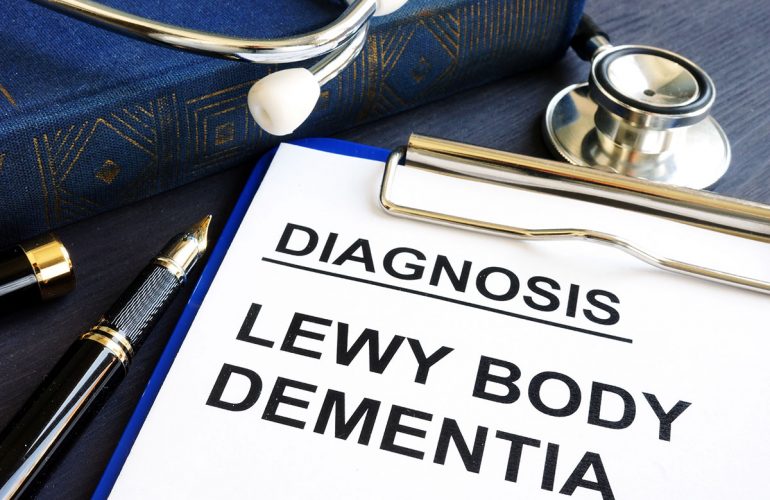Many people may not be aware that Lewy Body dementia is one of the most common types of dementia, right after Alzheimer’s disease and Vascular dementia. It usually begins around age 50, but can occur earlier. Lewy Body dementia involves abnormal protein deposits called “Lewy Bodies”, which are balloon-like structures that form on the inside of cells. As the protein alpha-synuclein and other proteins build up, neurons degenerate and die. While initial symptoms of Lewy Body dementia vary, as the disease progresses, they will include cognitive, physical, behavioral and sleep-related problems.
Two Related Conditions
1. Dementia with Lewy Bodies is characterized by cognitive symptoms that are seen within a year of movement symptoms called “parkinsonism” which includes tremors, rigid muscles, and difficulty with walking and posture. It is a form of progressive dementia and worsens over time.
Other symptoms include loss of sense of smell, sleeping difficulties, and visual hallucinations that develop up to 10 years after movement problems begin. Some signs and symptoms can be confused as those of Alzheimer’s disease, including memory loss, poor judgment, and confusion. Some are also like those of Parkinson’s disease, namely movement problems.
2. Parkinson’s Disease Dementia involves cognitive symptoms that appear more than a year after the beginning of movement problems and occurs in people diagnosed with Parkinson’s disease. This disease affects memory, language, social judgment and reasoning.
People with Parkinson’s Disease Dementia have also been found to have Lewy Bodies, amyloid plaques, and tau, just like those in people with Parkinson’s and Alzheimer’s disease.
Symptoms of Lewy Body Dementia
There are numerous symptoms associated with LBD, including changes in thinking and reasoning, and confusion one day and alertness the next. Movement disorders also accompany the disease and include slowness in movement, imbalanced gait, and Parkinson’s movements. The disease also produces hallucinations and delusions, sleeping difficulties, and memory loss even more profound than Alzheimer’s disease.
Causes and Risks
There are no known risks for developing Lewy Body Dementia. No genes have been identified and family history has not been identified as a risk factor.
Treatments
Just as there are no known causes or risks, no medication targeted specifically for the treatment of LBD has been developed. Alzheimer’s drugs, antipsychotic medications, antidepressants and Clonazepam or Klonopin which are used to treat REM sleep disorder, may also be effective in treating a number of associated symptoms such as depression, hallucinations and delusions.
Final Thoughts on Lewy Body Dementia
Lewy Body Dementia is among the nine known types of dementia, and ranks as the third most common, after Alzheimer’s and Vascular dementia. One of the disease’s hallmarks, Lewy Bodies, are abnormal proteins that form on the inside of brain cells. This protein, along with alpha-synuclein and other proteins, build up, leading to the degeneration and death of cells. There are no known risk factors, causes or medications for Lewy Body dementia. Hopefully, research and time will provide more answers and better treatments for people who need it.
(NOTE: Interested in learning more about Memory Care & Dementia? Checkout my Memory Care & Dementia CEUs on CEU Academy and try a FREE CEU today!)
More Memory Care & Dementia Articles
- Frontotemporal Dementia (FTD): A Brief Introduction
- Managing Sundowning Symptoms
- Physiological Causes of Sundowning
- Sundowning: A Brief Introduction
- Vascular Dementia: A Quick Review
- Alzheimer’s Disease and Virtual Reality
- The Alzheimer’s Vaccine: An Update
- Reminiscence Therapy and Dementia
- Depression: A Risk for Alzheimers, But How?
- Diet and Dementia: Eat to Beat Dementia!

